Beau Brummell, the quintessential dandy, famously declared, “Don’t talk about your clothes, let your clothes do the talking.” It’s a sentiment that resonates powerfully within the legacy of Black dandyism, where style has been used not only as a form of elegance, but as a language of resistance and self-possession. At this year’s Met Gala, themed Superfine, we saw contemporary interpretations of this ethos. Some thoughtful, others less so. With a dress code titled “Tailored for You,” the evening invited a dialogue between history and self-styling, asking: what does it mean to dress with intention? And who gets to author their identity through fashion? As always, some looks spoke volumes, others barely whispered.
Black dandyism has never been about simply looking good. It is about resistance. It is about making a statement on identity, autonomy, individuality. Over the last three centuries, style has been a vehicle for Black people to reclaim agency on their own terms. The 18th-century rise of global consumption, powered by slavery, colonialism and imperial expansion, granted access to materials and garments once reserved for European elites. But Black dandies didn’t just assimilate, they subverted. They used clothing as a visual language of resistance. A way of saying: I am not yours to define.
Monica L. Miller, in her 2009 book Slaves to Fashion, writes that enslaved people “arrived in America physically and metaphorically naked, a seeming tabula rasa on which European and new American fashions might be imposed.” Black dandyism emerged as a radical answer to that void, a form of self-authorship, of imagining new futures through fabric, silhouette and fold.
It has always been about more than aesthetics. Frederick Douglass dressed with intention, to assert dignity. During the Harlem Renaissance, style stood shoulder to shoulder with art, music and literature. Josephine Baker didn’t just perform in feathers and furs, she walked a leopard into the theatre (yes, that happened. Diana Vreeland swore by it). She used fashion as voice, as armour, as spectacle. And today, that same ethos pulses through the work of designers like Martine Rose, who reimagines streetwear as couture; Olivier Rousteing, whose sculptural looks at Balmain are theatre; and Thom Browne, whose architectural suiting plays in sharp, subversive contrast.
So how do we spot a Black dandy? According to British Vogue, it starts with tailoring. A crisp silhouette, a precision fit. Then comes colour. Bold florals prints, jewel tones, unexpected clashes that hold your gaze. Accessories are essential, and always carry weight. Every element, from sunglasses to pocket squares has a job to do. There’s a layering of influences, of geographies and histories. And finally: aura. Not performance, but posture. The Black dandy doesn’t just wear clothes, they carry them with intent. Knowing full well that what they wear is a statement.
This year, some designers clearly took this manifesto to heart, interpreting the theme through their own lens. And that’s what I loved seeing: context, reworked. Meaning, styled into new shapes. I only wish we saw a little more than the usual black and white suits... but that’s just my preference.
Here are the looks that made the fold and should be part of the MET Archives.
Sofia Richie in Tommy Hilfiger
She got the memo, yes, and for that, we’ll give her credit. Was it on theme? Not exactly. But it fit the dress code of being tailored for you. And indeed it was tailored, it was elegant, and yes, it was very her. Gliding up the Met steps in a floor-length ivory satin gown by Tommy Hilfiger, she embodies the language of quiet luxury: high neckline, cap sleeves, an open back softened by two voluminous bows. The look was clean, composed, and on brand, modest from the front, bridal from the back. She called it sleek and fitted, and said she “stayed very true” to herself. And that’s fair. But can we maybe leave the wedding references behind now? It’s been over a year.
Miley Cyrus in Alaïa
Miley Cyrus wore custom Alaïa by Pieter Mulier, paired with Cartier jewelry, including a stacked three-ring necklace that echoed the sculptural elegance of the look. The ensemble played with contrasts, hard and soft, structure and skin, through a crocodile textured leather crop top and a sharply tailored black skirt that flared into pleats reminiscent of Charles James’ iconic tulip gowns. On the red carpet, she framed the theme as a celebration of individuality: “challenging what’s expected of you,” she said, “and going beyond.” For her, fashion is “like armor... a representation of power and strength.” And in this look, she made that sentiment tangible, presenting not just a silhouette, but a stance.
Colman Domingo in Valentino
A Fold Favorite. Colman Domingo, the “Four Seasons” actor and co-chair of this years MET Gala, delivered one of the night’s most commanding silhouettes. Draped in a sweeping, pleated royal-blue cape designed by Valentino’s creative director Alessandro Michele, the look was both stately and symbolic. Michele, known for his maximalist touch crafted a piece that felt like modern regalia. Anchored by an elaborate silver-sequined chest piece evocative of ceremonial armor, the ensemble paid homage to André Leon Talley’s iconic 2011 royal blue cape.
“I got inspiration from the Moors, like Othello the Moor, and kings,” Domingo shared. “And also the color blue. Monica [L. Miller] told me that a freed slave once dreamed of wearing his finest blue superfine wool suit… and I thought, that’s perfect for tonight.” The palette and references weren’t incidental, they were carefully layered. Beneath the cape, Domingo wore wide-leg wool trousers, a butter-silk shirt, and a black-and-white tweed blazer. The look was punctuated by antique silver canes, feathered flourishes, and teardrop pearl necklaces: a fusion of Black dandyism, theatrical power dressing, and reverence for lineage.
Zendaya in Louis Vuitton
In praise of the zoot suit. Historically known for its exaggerated shoulder pads, sweeping lapels, and sharply tapered trousers, the zoot suit emerged from Harlem’s mid-1930s dance halls as more than just a fashion statement, it was a cultural assertion. Worn by Zendaya, styled by Law Roach, the look in question, a custom Louis Vuitton ensemble designed by Pharrell Williams, offered a crisp, contemporary take on the classic zoot silhouette. The all-white tailored tuxedo, with its single-breasted jacket, waistcoat, silk shirt and tie, and flared trousers, paid direct homage to the power suiting of the 1970s and ’80s. It was a nod not just to zoot suit, but also to the trailblazing Black women, Grace Jones, Gladys Bentley, who redefined what rock-and-roll power dressing could look like. A study in precision and presence, the look stood as both revival and reclamation.
Kendall Jenner in Torishéju Dumi
The FOLD loved this look. It truly felt tailored to Jenner, in every sense of the word. She took a delightfully unexpected route by collaborating with independent British designer Torishéju Dumi, whose eponymous label has already found admirers in Zendaya, Naomi Campbell, and Paloma Elsesser.
“I had a vision of being very minimal and tailored for this Met,” Jenner shared. “Finding a new, young designer was the vision.” Dumi’s technical training lends her work a depth that challenges and redefines what tailoring can mean.
Their shared point of inspiration was Black dandyism, though not through the expected lens. Instead, they looked to Gladys Bentley, a trailblazing female dandy. “She had a really strong sense of self,” Dumi said. “She took tailoring, often coded as masculine and made it her own, bending it to reflect her identity, her music, her power.”
Rather than recreate Bentley’s most iconic looks, Dumi designed something that spoke directly to Jenner’s body and presence: a sharply tailored skirt suit with a cinched waist, elongated torso, and exaggerated curves. “There’s only so much clothes can do,” she explained. “When you’re designing for someone, you have to think about who they are and how they want to be perceived. That’s what I really wanted to do with Kendall.” The result was a potent tribute to identity, heritage, and personal authorship through fashion.
Laura Harrier in Gap
A standout in butter yellow, Laura Harrier’s look was quietly powerful and a nod to heritage, identity, and the reimagining of tradition. Designed by Zac Posen, the ensemble featured a denim vest, duchess satin tailored trousers, and a dramatic train. But beyond its striking silhouette, the look was layered with personal meaning. According to the brand, it was inspired by archival photographs of Harrier’s father and uncle. Images that evoke the legacy of the early literary dandy, and more intimately, Black male elegance as an act of self-definition.
“Those photos are more than just style, they’re about pride, presence, and the way Black men in my family used fashion to express dignity,” Harrier told WWD. “Seeing that legacy reimagined by Zac and brought to life on a stage like the Met Gala feels full circle. It’s emotional, honestly.”
For Posen, tailoring was the vehicle for that story. “I hope it shows that tailoring can be more than just a silhouette: it can be a statement of identity, belonging, and creative autonomy,” he said. “This look challenges rigid binaries around masculinity and femininity, formality and rebellion. It’s about owning your narrative and showing up with intention.”
And that’s exactly what Harrier did, tailoring not just worn, but embodied.
Further Reading: Which Looks Deserve the MET Archives.


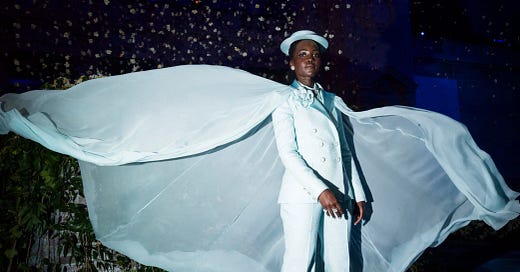


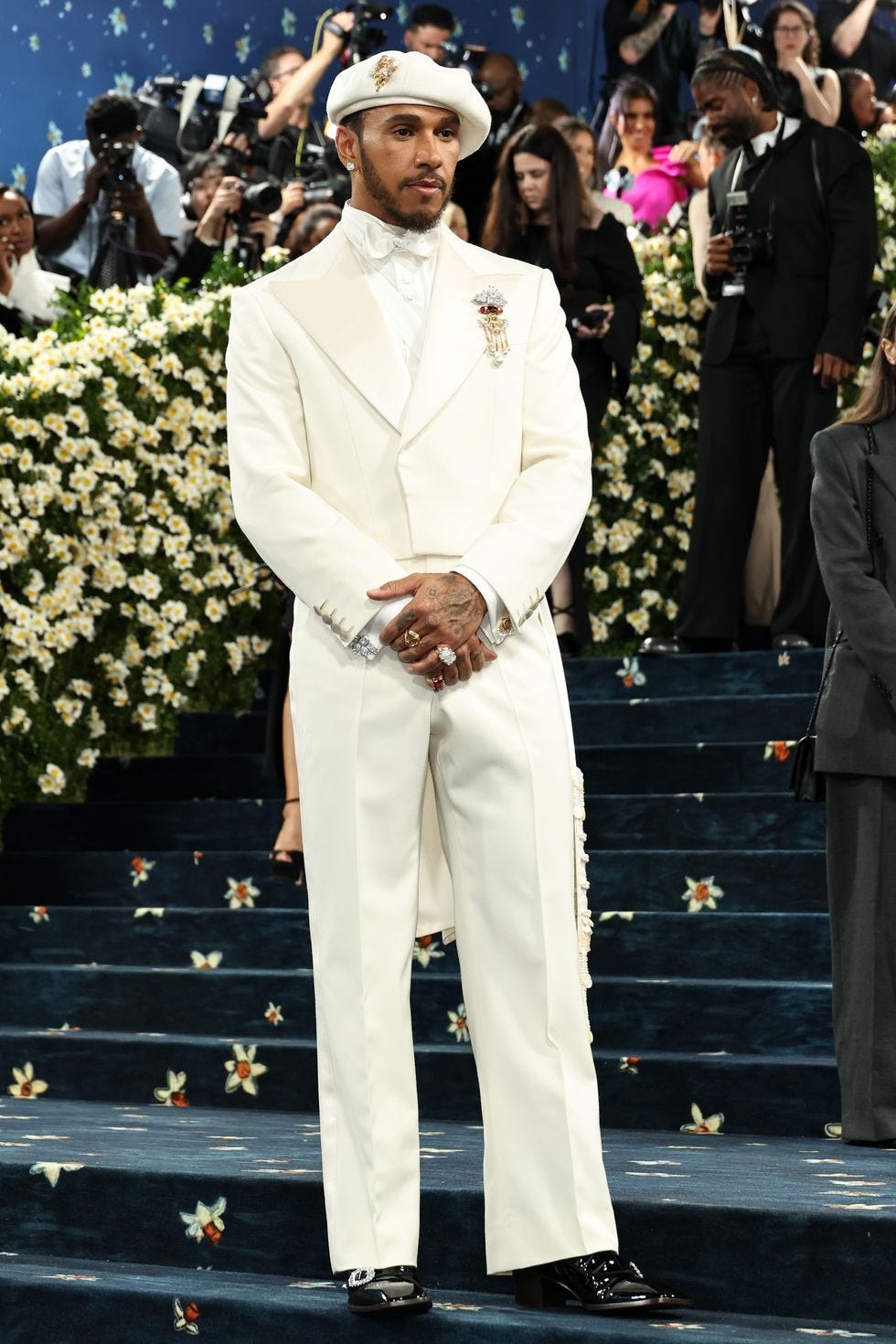


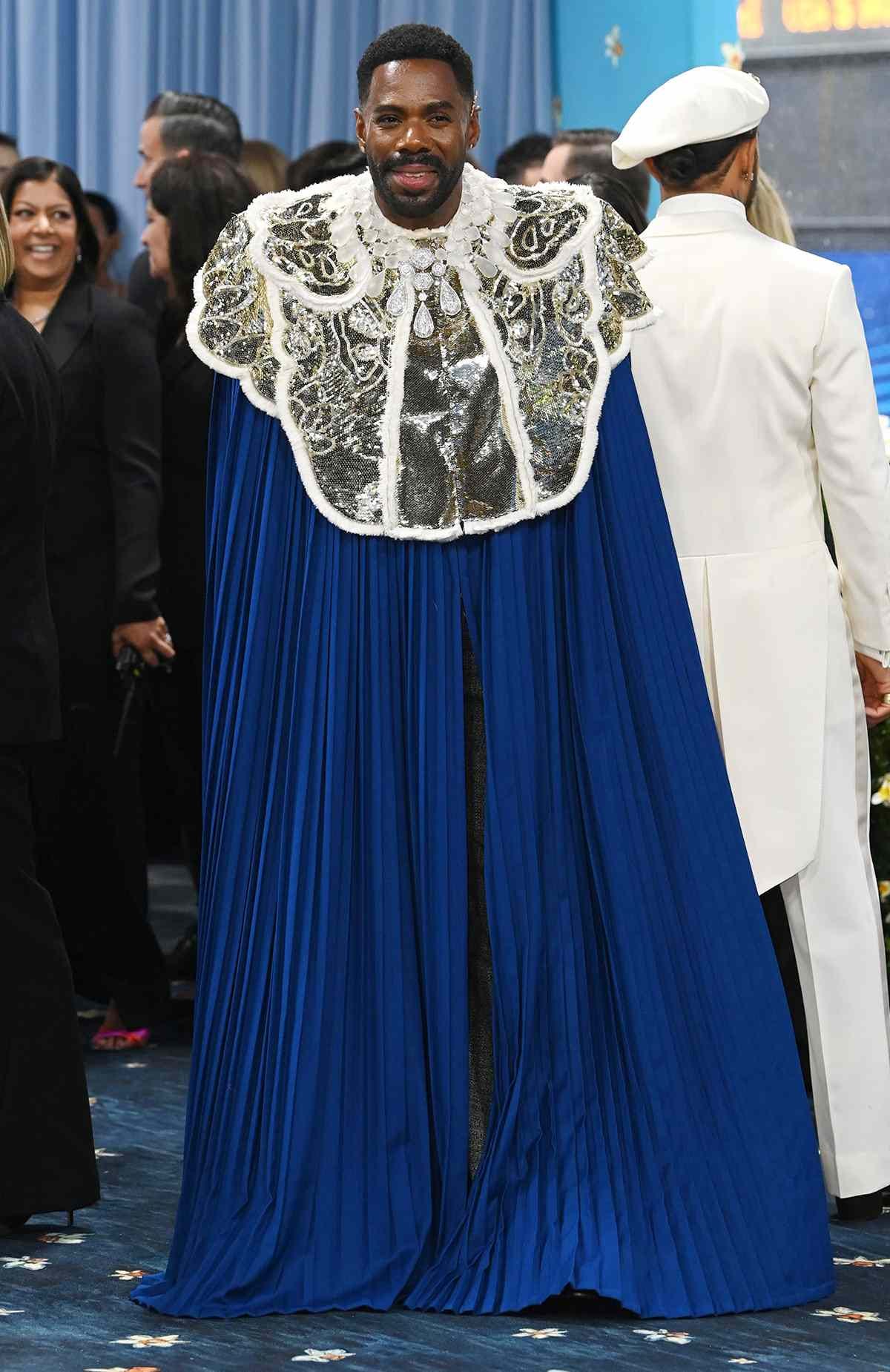

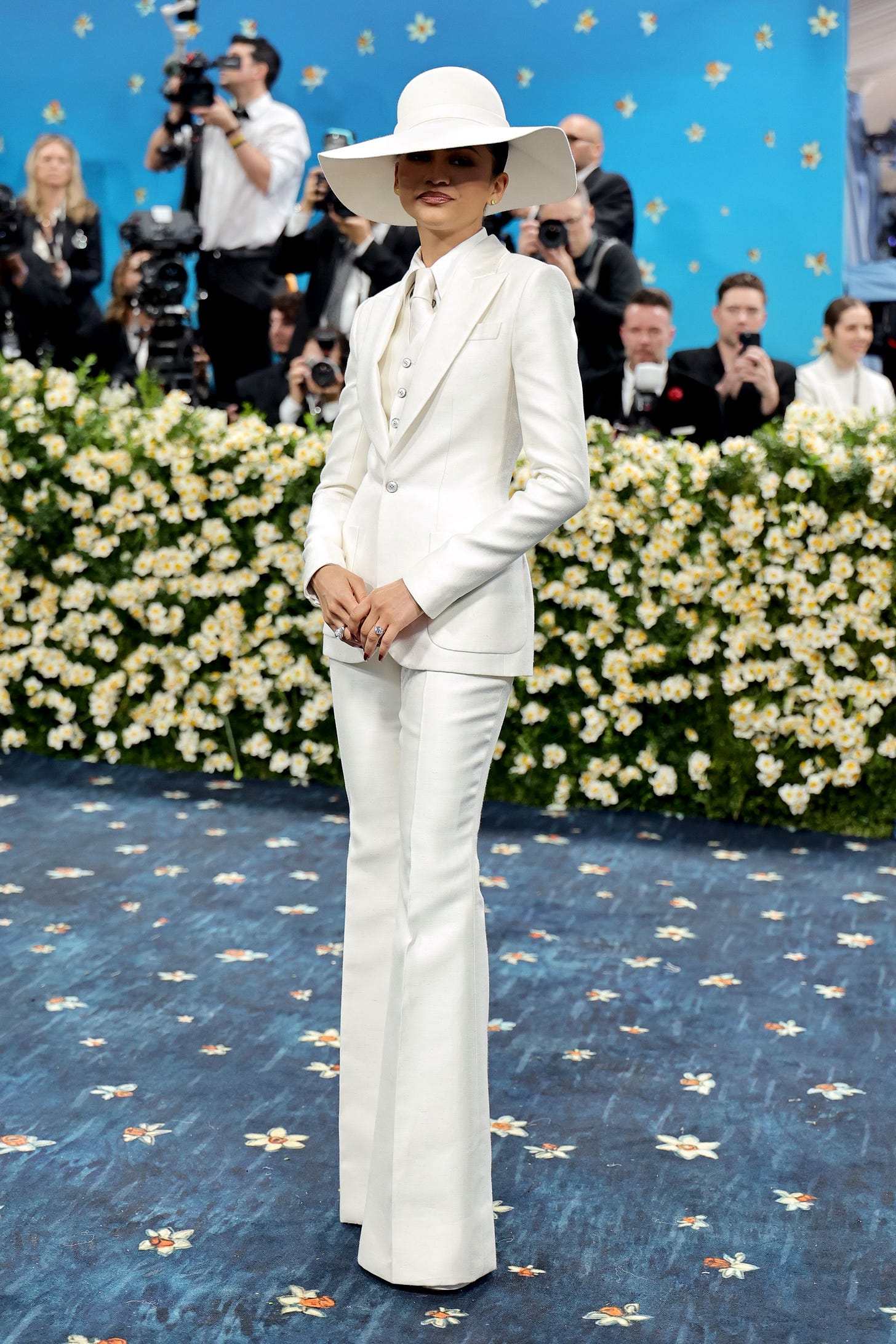
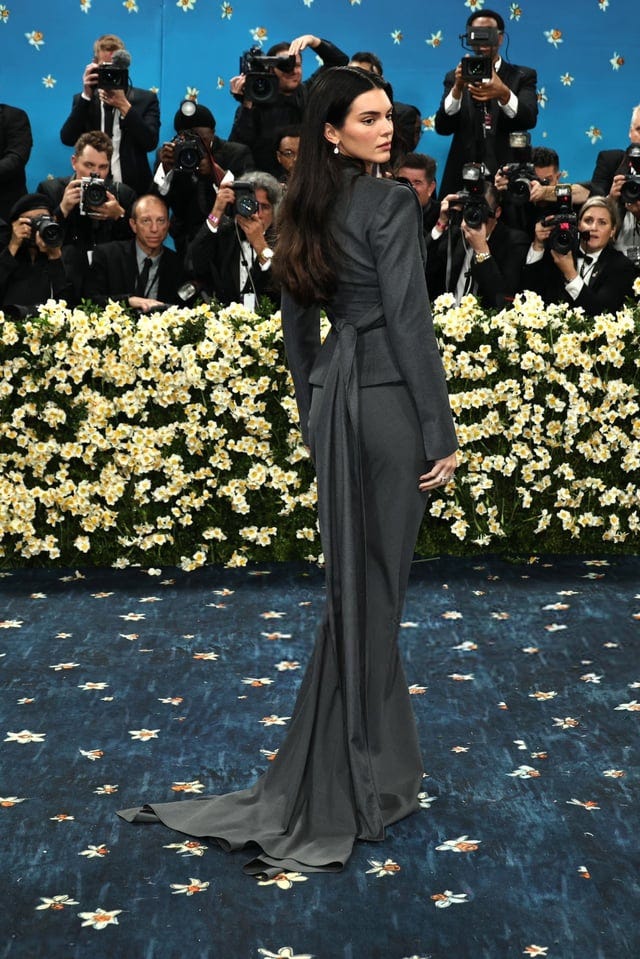

Love this!